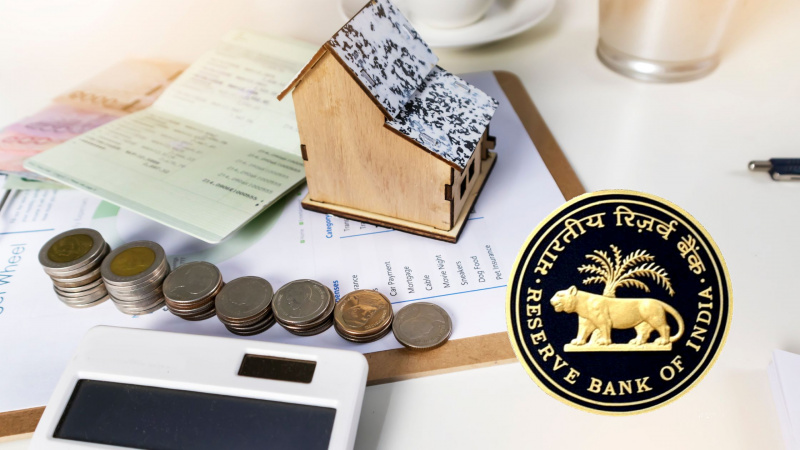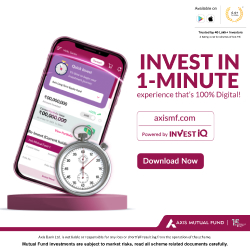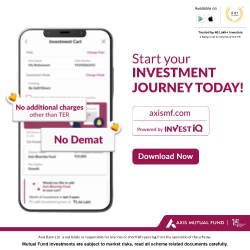What is the Bond Market & How Does It Impact Your Investments?
Bond Market Structure and Operations Exploring the bond market is truly captivating. It's filled with corporate bonds and government bonds from various iss
- by B2B Desk 2025-02-05 09:42:55

Key Takeaways
- The bond market is a financial marketplace where investors can buy and sell bonds.
- Bonds are basically loans to entities like governments, corporations, and municipalities.
- Investing in bonds can provide a relatively stable source of income.
- The bond market can have a significant impact on your investment portfolio.
- Understanding bond market analysis is key for making smart investment choices.
- The bond market offers various types of bonds, including government bonds, corporate bonds, and municipal bonds.
Understanding the Bond Market Basics
What Exactly is a Bond?
The bond's face value, interest rate, and maturity date are important. They help determine its value and appeal to investors.
Key Components of Bond Trading
The bond market is shaped by several factors, including:
- Interest rates: The rate at which interest is paid to the bondholder
- Yields: The return on investment, taking into account the bond's price and interest payments
- Credit ratings: The assessment of the borrower's creditworthiness, affecting the bond's risk and return
The Role of Bond Markets in the Economy
Bond Market Structure and Operations
- Primary market transactions, where new bonds are issued
- Secondary market transactions, where existing bonds are traded
- Regulatory bodies, which oversee the bond market to ensure transparency and fairness
The bond market is key to the economy. It helps entities raise capital and investors earn. Knowing how the market works helps investors choose wisely between corporate bonds and government bonds.
Primary vs Secondary Bond Markets
How New Bonds Are Issued
Issuing new bonds involves several groups. The issuer sets bond details like interest and maturity. Underwriters then evaluate the issuer and price the bond.
Trading Existing Bonds
Existing bonds are traded in the secondary market. This market's price changes due to volatility. It offers liquidity, making it easy for investors to trade bonds.
Market Participants and Their Roles
Market players like investors, issuers, and intermediaries are vital. Investors fund issuers, while issuers finance their projects. Intermediaries, like banks, help issue and trade bonds.
Essential Types of Bonds for Indian Investors
Investing in bonds has many benefits:
- Regular income through interest payments
- Relatively low risk compared to other investment options
- Diversification of portfolio
Investing in bonds is a great way to diversify your portfolio and generate a steady income stream.
In conclusion, bonds are a solid choice for Indian investors. They offer a stable income and portfolio diversification. By understanding bond types and their features, you can reach your financial goals.
| Type of Bond | Credit Rating | Interest Rate | Maturity Period |
|---|---|---|---|
| Government Bond | AAA | 6-8% | 5-10 years |
| Corporate Bond | AA | 8-10% | 3-7 years |
| Municipal Bond | A | 7-9% | 5-15 years |

Understanding Bond Yields and Returns
Calculating Bond Yields
The formula for bond yield is: Yield = (Coupon Rate * Face Value) / (Face Value + Accrued Interest). This formula gives a basic idea of the bond's yield. But, it's important to think about other factors like interest rates and credit risk for a full picture.
Impact of Interest Rates
Interest rates greatly affect bond yields and returns. When rates go up, bond prices drop, leading to higher yields. When rates go down, bond prices rise, leading to lower yields. Keeping up with bond market news and analysis is key for making good choices.
Risk-Return Relationship
The risk-return relationship is vital in bond investing. Bonds with higher yields often have higher credit risk. Bonds with lower yields have lower credit risk. Investors need to think about their risk tolerance and goals before choosing. Staying informed about bond market news helps investors make better decisions and improve their portfolios.
| Bond Type | Yield | Credit Risk |
|---|---|---|
| Government Bond | 4-6% | Low |
| Corporate Bond | 6-8% | Medium |
| High-Yield Bond | 8-10% | High |
Bond Market Investment Strategies
- Investing in a mix of government and corporate bonds
- Considering international bonds to diversify my portfolio
- Monitoring interest rates and adjusting my investments as needed
With these strategies, I can make smart choices and confidently handle the bond market's complexities.
Navigating Bond Market Risks
Investing in the bond market comes with risks. It's key to know these risks when you invest in corporate bonds or government bonds. The bond market can change quickly. Interest rates, credit ratings, and market conditions can all impact your bonds' value.
There are several risks to think about when investing in bonds. These include:
- Interest rate risk: This happens when interest rates change and affect your bonds' value. If rates go up, your bonds might be worth less.
- Credit risk: This is the chance that the bond issuer might not pay back what they owe. This risk is higher for corporate bonds than for government bonds.
- Market risk: This risk comes from changes in the bond market. If the market goes down, your bonds' value could drop too.
It's vital to understand these risks before you invest in bonds. Knowing the risks and rewards helps you make smart choices. Whether you're looking at corporate bonds or government bonds, being aware of risks is key. Taking steps to reduce these risks is also important.
The Indian Bond Market Landscape
Government Securities Market
The government securities market is the biggest part of the Indian bond market. It offers many types of bonds, like treasury bills and government bonds. This market is very active, with lots of players like banks and insurance companies.
Corporate Bond Market
For those wanting to keep up with bond market news and analysis, there are many good sources. You can find them on financial news websites and in reports from top research firms.
In summary, the Indian bond market is full of variety and change. With more people interested in bond market analysis and news, it's important to stay current with the latest happenings and trends.
| Segment | Description |
|---|---|
| Government Securities | Issued by the government to finance its fiscal deficit |
| Corporate Bonds | Issued by companies to raise capital for business purposes |
Bond Market Holidays 2025 (India)
The Indian bond market follows the holiday schedule set by the Reserve Bank of India (RBI) and stock exchanges such as NSE and BSE. Below is the list of holidays when the bond market will remain closed in 2025:
| Date | Day | Holiday |
|---|---|---|
| January 1, 2025 | Wednesday | New Year’s Day |
| January 26, 2025 | Sunday | Republic Day |
| March 17, 2025 | Monday | Holi |
| April 11, 2025 | Friday | Ram Navami |
| April 14, 2025 | Monday | Dr. B.R. Ambedkar Jayanti |
| April 18, 2025 | Friday | Good Friday |
| May 1, 2025 | Thursday | Maharashtra Day |
| August 15, 2025 | Friday | Independence Day |
| October 2, 2025 | Thursday | Gandhi Jayanti |
| October 31, 2025 | Friday | Diwali (Laxmi Pujan) |
| November 1, 2025 | Saturday | Diwali Balipratipada |
| December 25, 2025 | Thursday | Christmas Day |
The bond market follows the RBI holiday schedule, which may vary slightly based on regional holidays in different states.
Conclusion: Making Informed Bond Investment Decisions
Whether you're experienced or new to bond investing, keep learning. The insights in this article can help. With the right knowledge and a balanced approach, you can use the bond market to improve your financial health.
Also Read: Mutual Fund SIP Inflows Surpass Rs 26,000 Crore for the First Time
FAQ
A bond is a type of investment where you lend money to a borrower. This borrower is usually a government or a big company. They promise to pay back the money you lent, plus some extra, over a set time.
Bond trading involves a few key things. These are interest rates, yields, and credit ratings. When interest rates go up, bond prices go down. Yields are what you get back from your investment. Credit ratings show how trustworthy the bond issuer is.
Bond markets are very important for the economy. They help governments and companies get the money they need for projects. They also help set interest rates, which affect inflation and how much things cost.
New bonds are sold in the primary market. The issuer, often with help from banks, decides on the bond's details. Then, they sell these bonds to investors, either directly or through public offerings.
Existing bonds are traded in the secondary market. Here, investors buy and sell bonds with each other. The price of a bond depends on its yield, credit rating, and how long it has left until it matures.
Indian investors should know about government, corporate, and municipal bonds. Government bonds are the safest and most liquid. Corporate and municipal bonds offer higher returns but are riskier.
Bond yields can be figured out in a few ways. The yield to maturity is what you get if you hold the bond until it matures. The yield to call is what you get if the bond is called back before it matures.
Interest rate risk is a big deal for bond investors. When interest rates go up, bond prices go down. This is because new bonds with higher yields are more appealing to investors.
Bond investing comes with a few risks. There's interest rate risk, where bond prices fall with rising rates. There's also credit risk, where the issuer misght not pay back. And market risk, where changes in the market can affect bond prices.
The Indian bond market has two main parts: government securities and corporate bonds. Government bonds are the biggest part. Corporate bonds are growing, with new products and more investors.
POPULAR POSTS
Rupee Forecast 2025: Key Drivers Behind INR Weakness Against the US Dollar
by Shan, 2025-08-11 07:32:23
August 2025 IPO Preview: Big Listings from JSW Cement, NSDL, Knowledge Realty & SME Stars
by Shan, 2025-07-30 11:51:27
Ola Electric Q1 Results FY26: Revenue Falls 61%, Net Loss at ₹870 Cr - MoveOS 5 in FocusOla
by Shan, 2025-07-14 12:22:55
HAL, BEL & Data Patterns: 3 Defence Stocks Riding India's ₹50,000 Cr Export Ambition
by Shan, 2025-06-26 10:00:16
India GDP Forecast 2025-26 Raised to 6.5% by S&P: Key Drivers & Global Risks Explained
by Shan, 2025-06-26 10:30:46
Dalal Street Outlook: 5 Key Market Triggers to Watch This Week
by Shan, 2025-06-16 12:32:04
Mutual Fund SIP Inflows Surpass Rs 26,000 Crore for the First Time
by B2B Desk, 2025-01-10 08:37:27
RECENTLY PUBLISHED

Loan EMIs to Drop as RBI Slashes Repo Rate - Full MPC December 2025 Highlights
- by Shan, 2025-12-05 11:49:44

Pine Labs IPO 2025: Listing Date, Grey Market Premium, and Expert Outlook
- by Shan, 2025-11-05 09:57:07

The Agentic Revolution: Why Salesforce Is Betting Its Future on AI Agents
- by Shan, 2025-11-05 10:29:23

Top 10 Insurance Companies in India 2026: Life, Health, and General Insurance Leaders Explained
- by Shan, 2025-10-30 10:06:42

OpenAI Offers ChatGPT Go Free in India: What’s Behind This Big AI Giveaway?
- by Shan, 2025-10-28 12:19:11

Best Silver Investment Platforms for 2025: From CFDs to Digital Vaults Explained
- by Shan, 2025-10-23 12:22:46




 Subscribe now
Subscribe now 